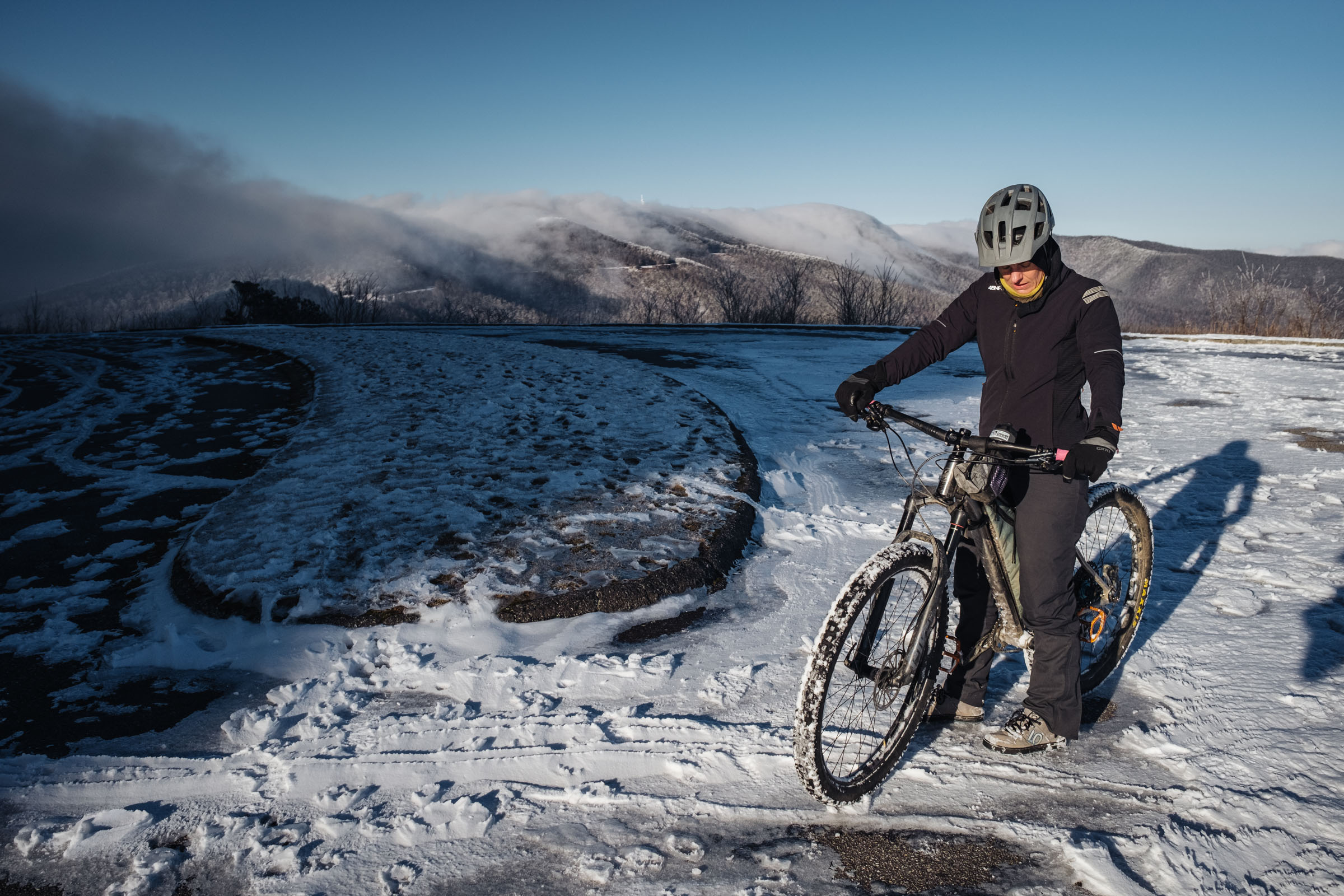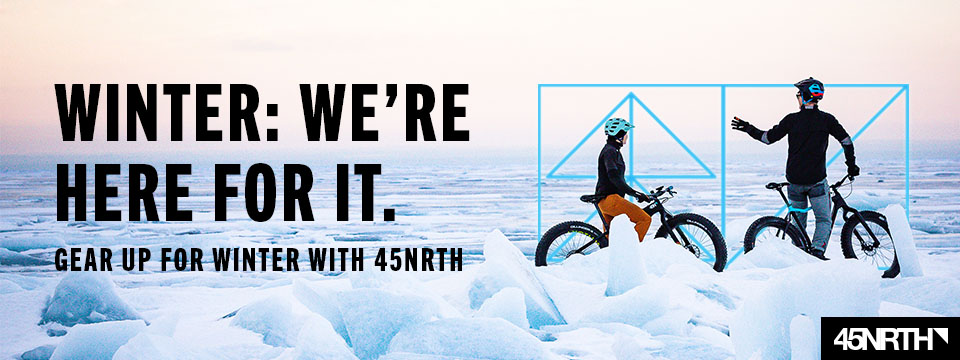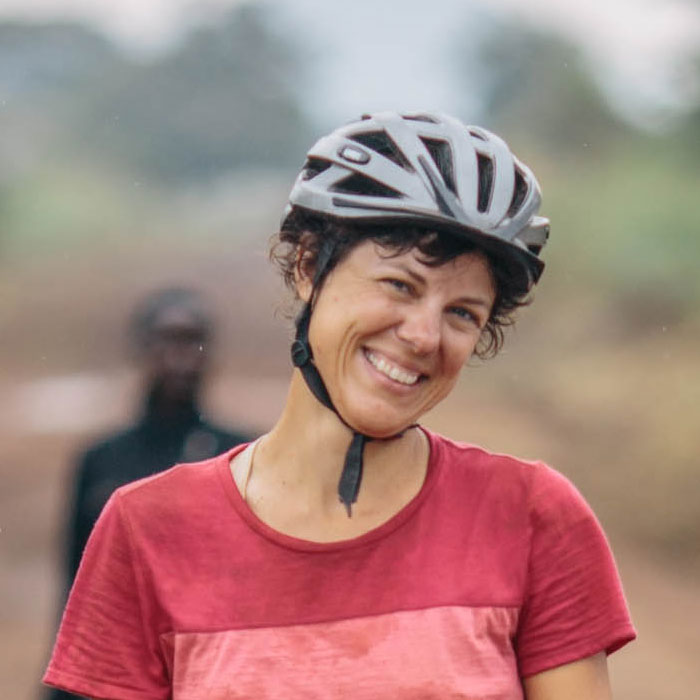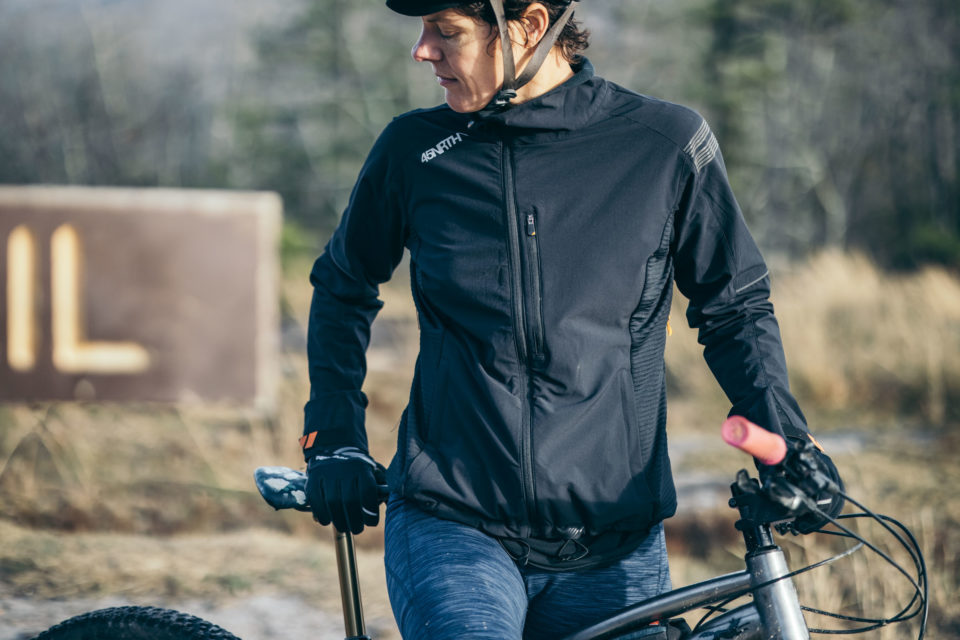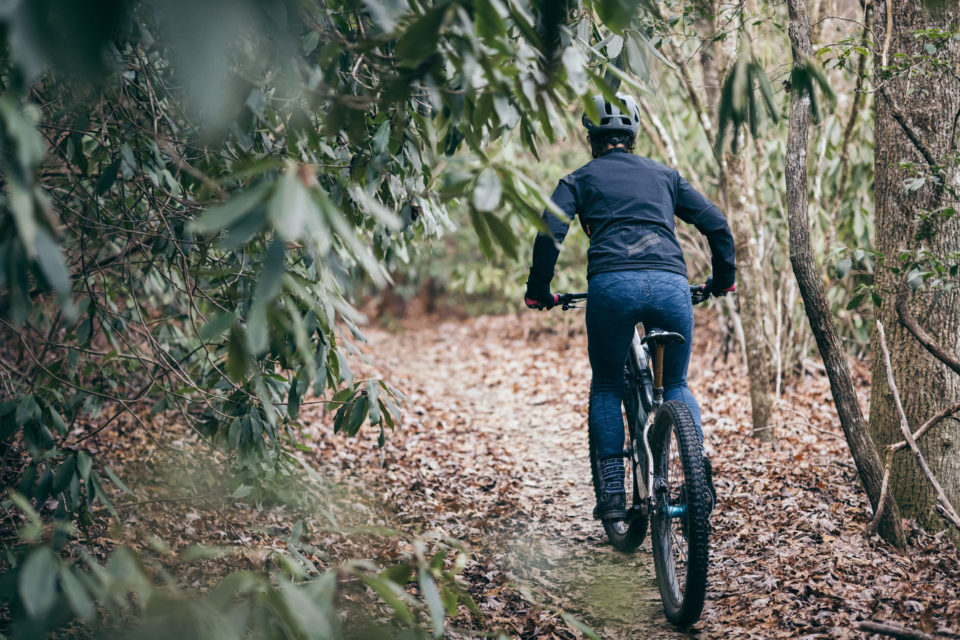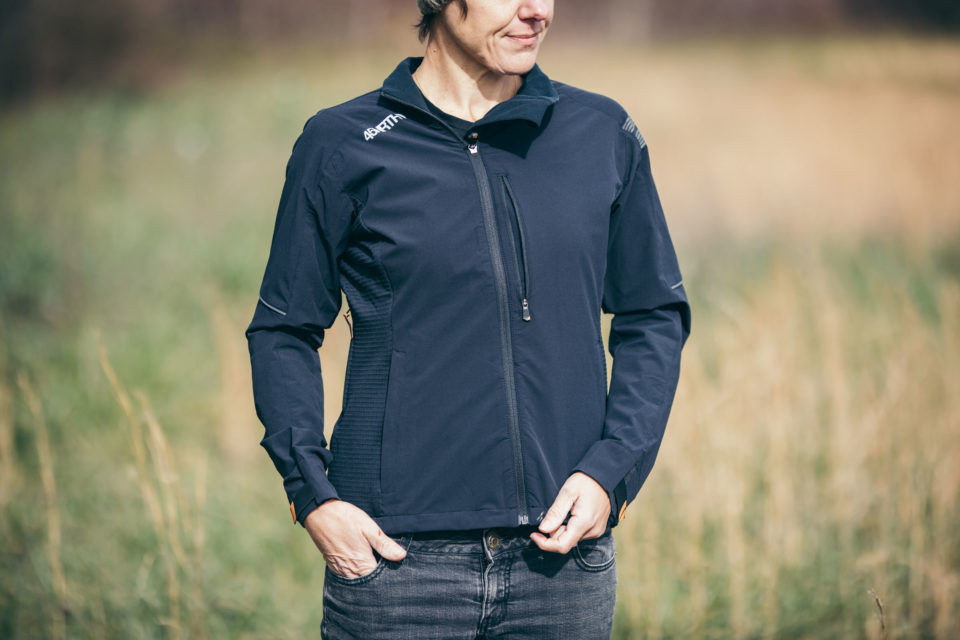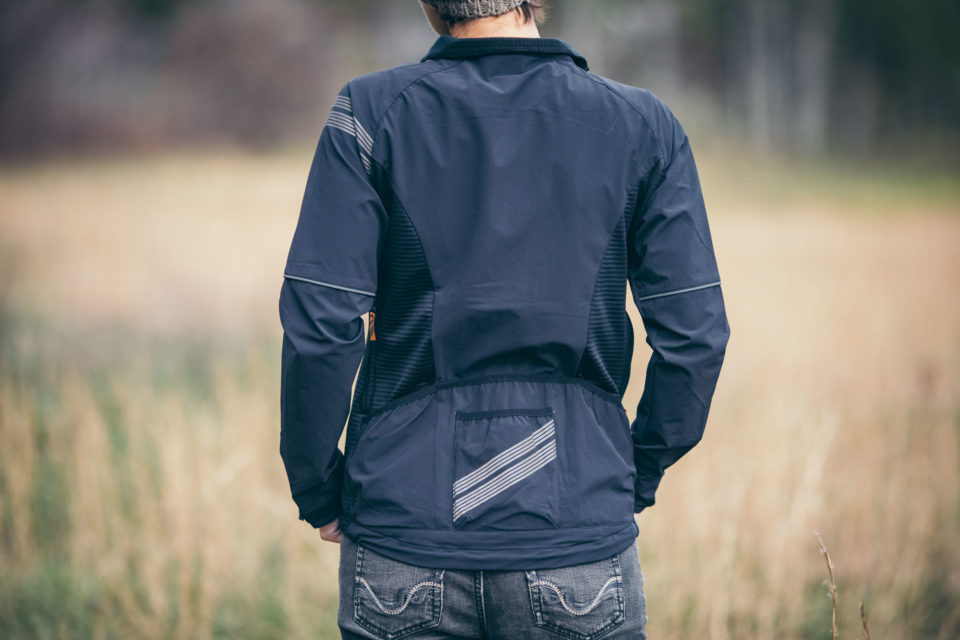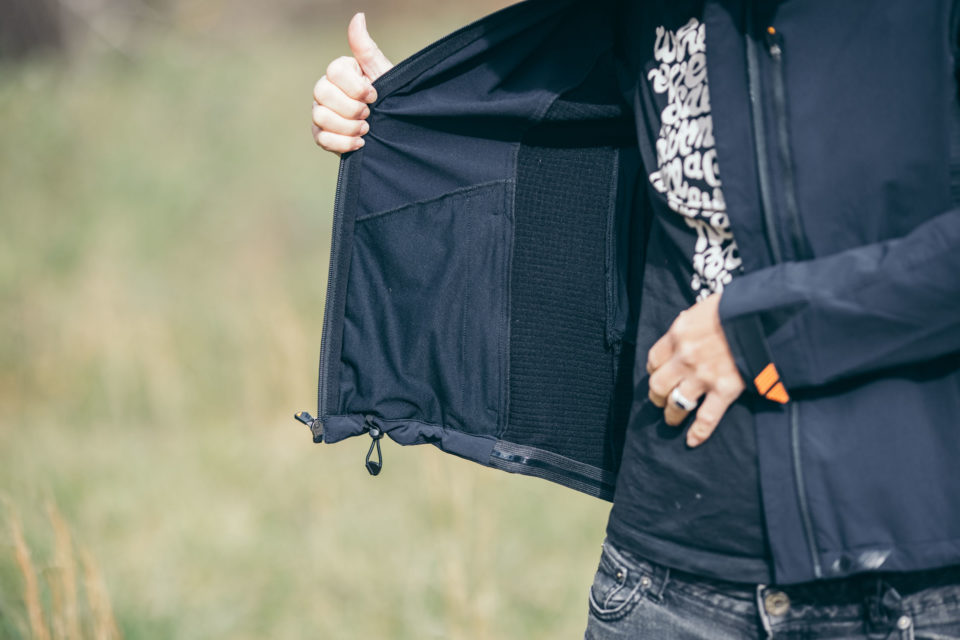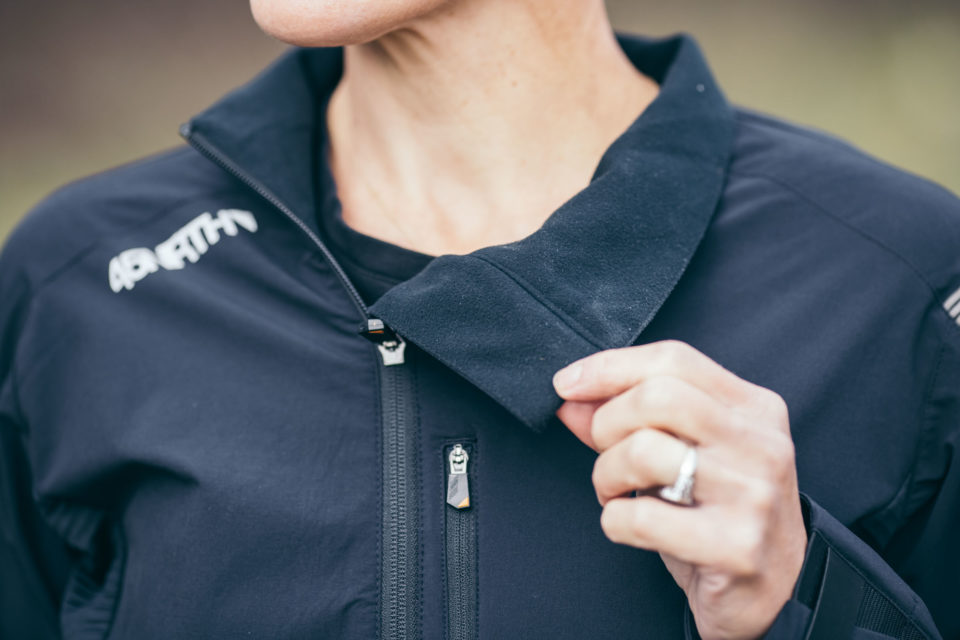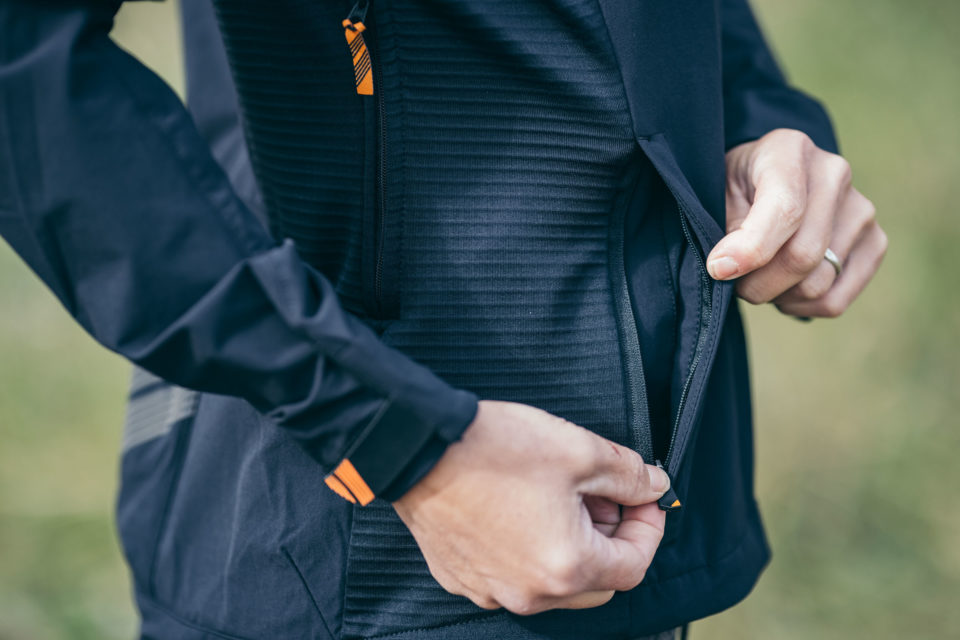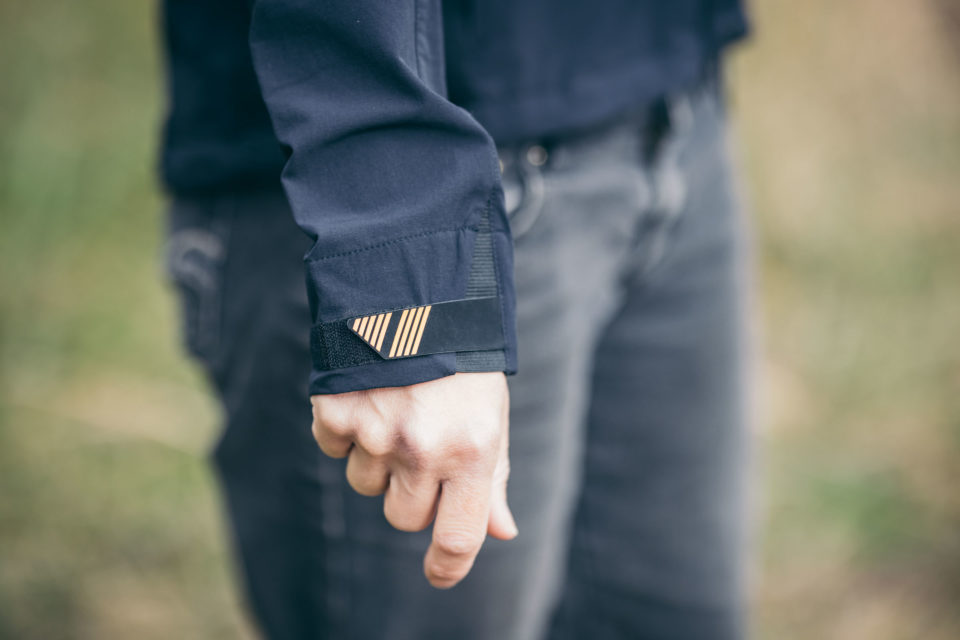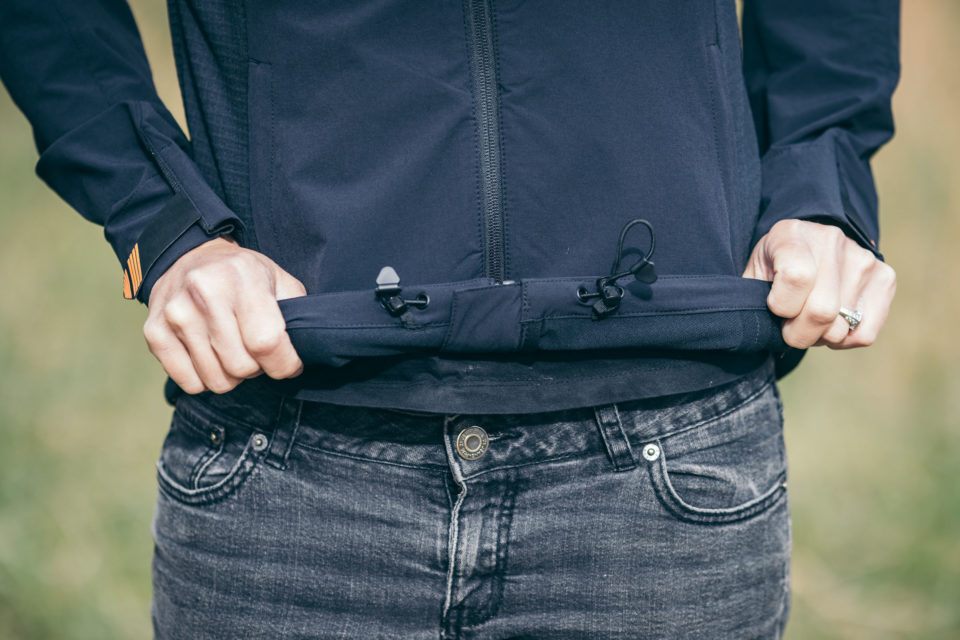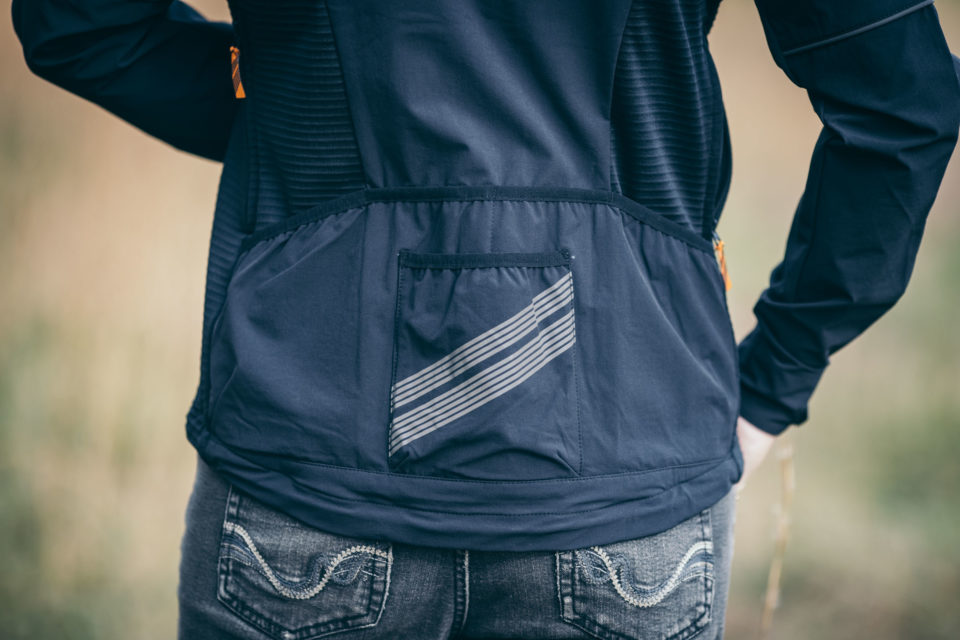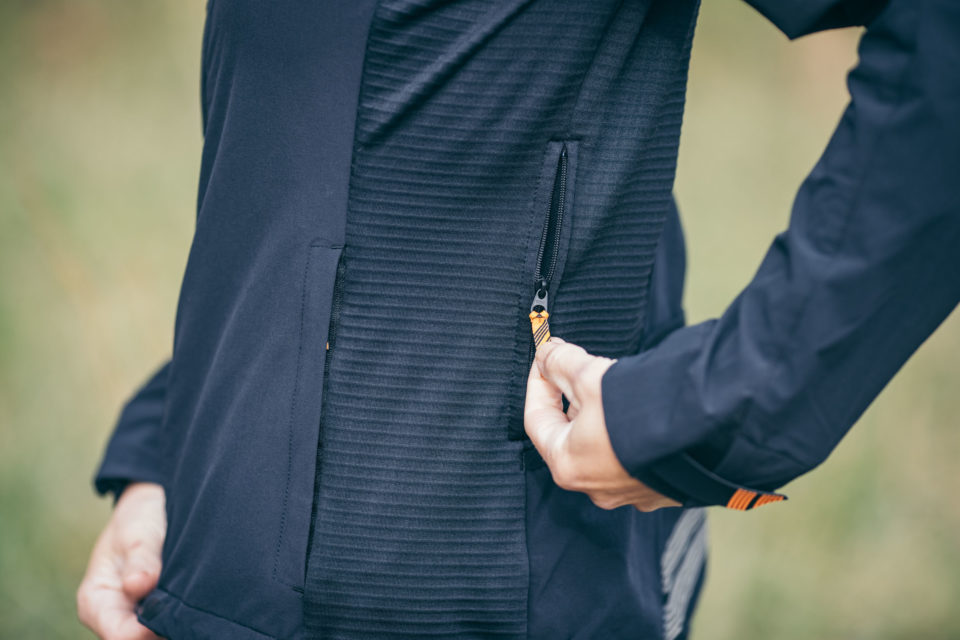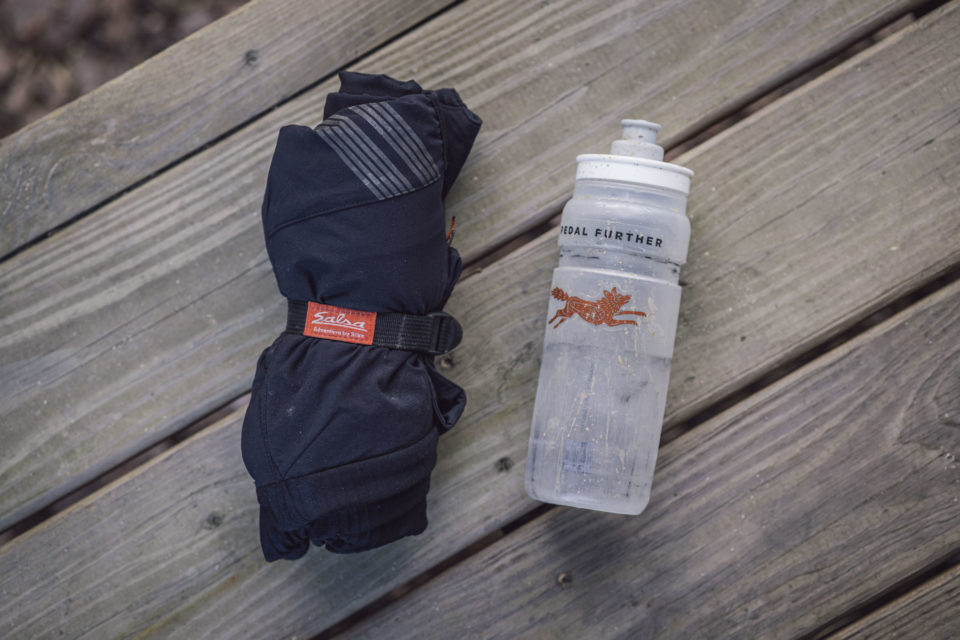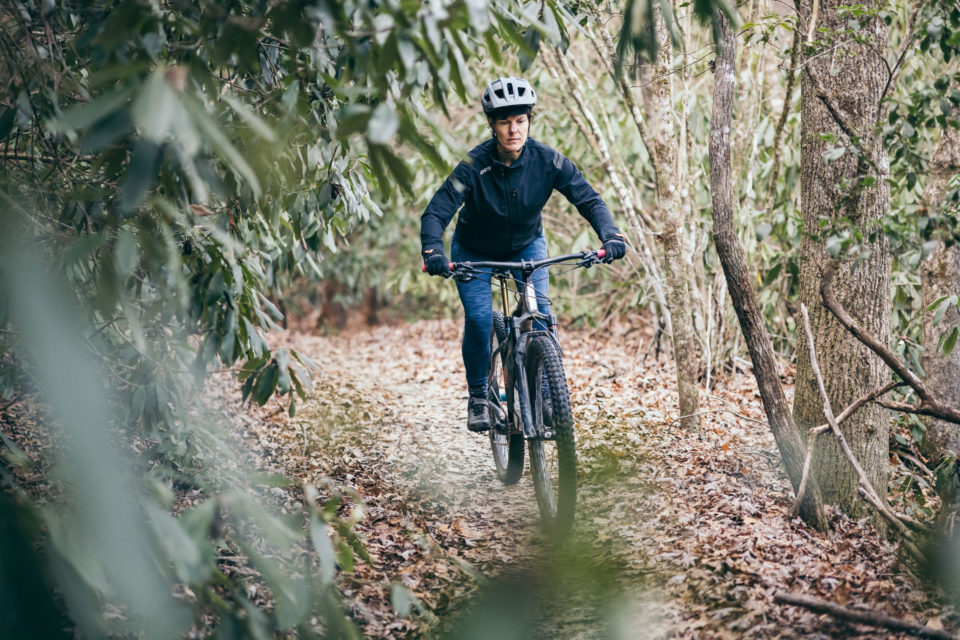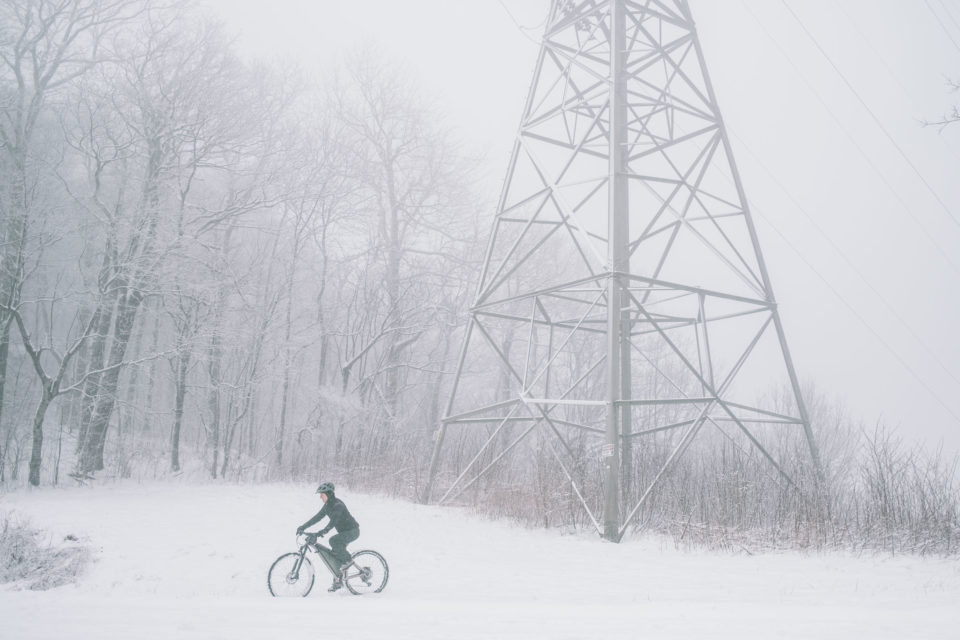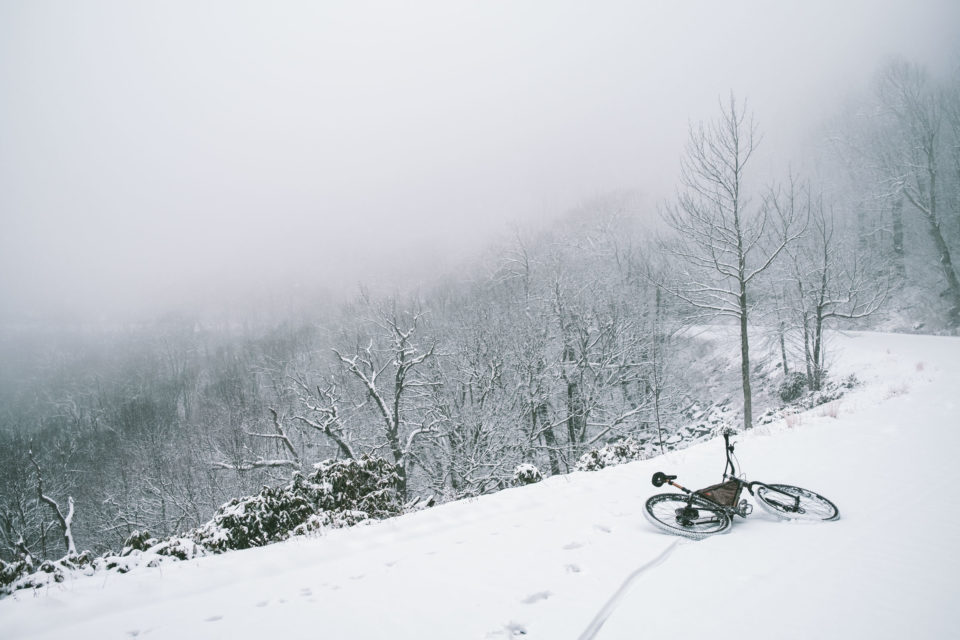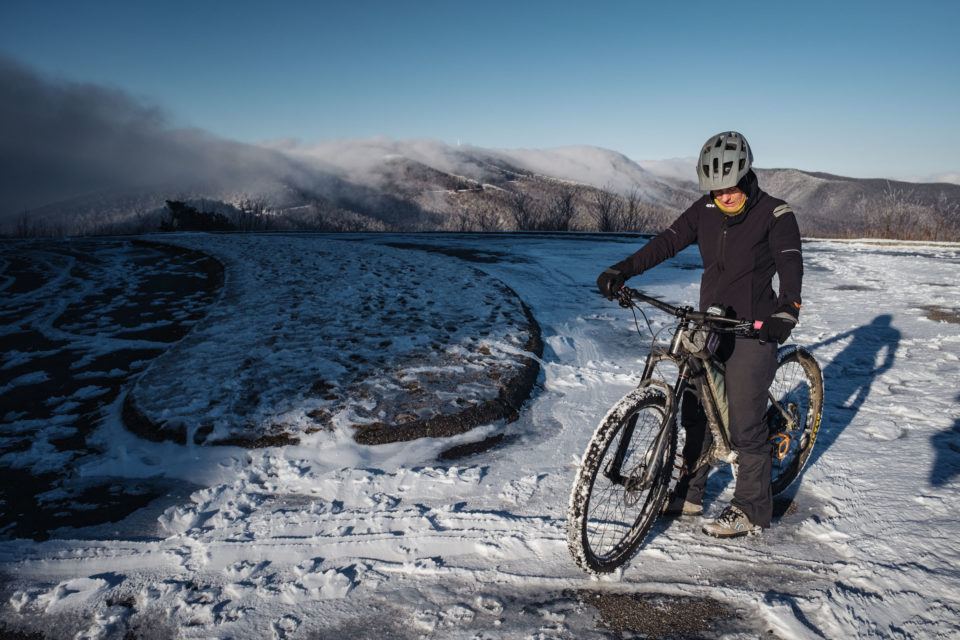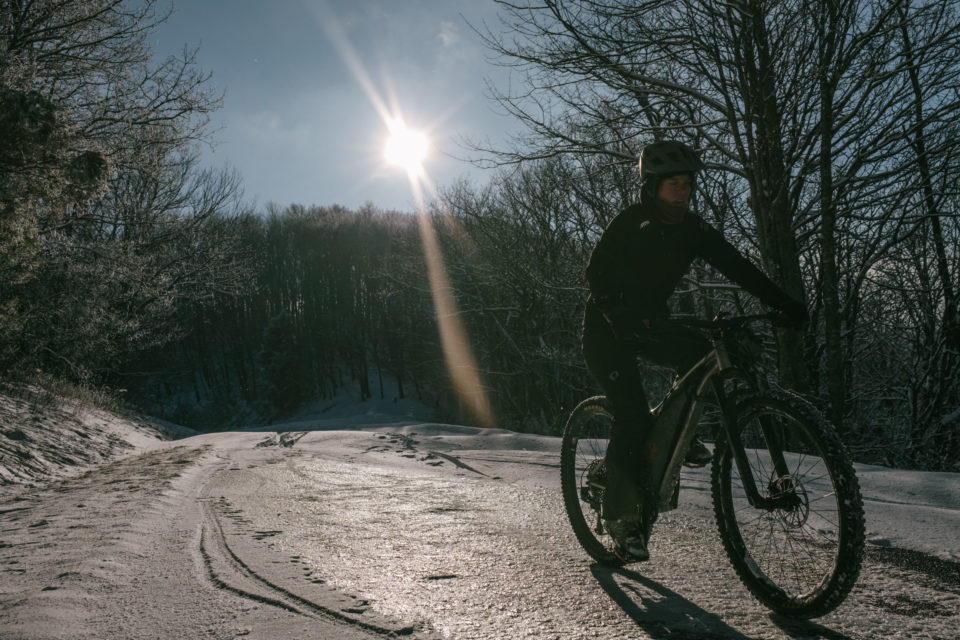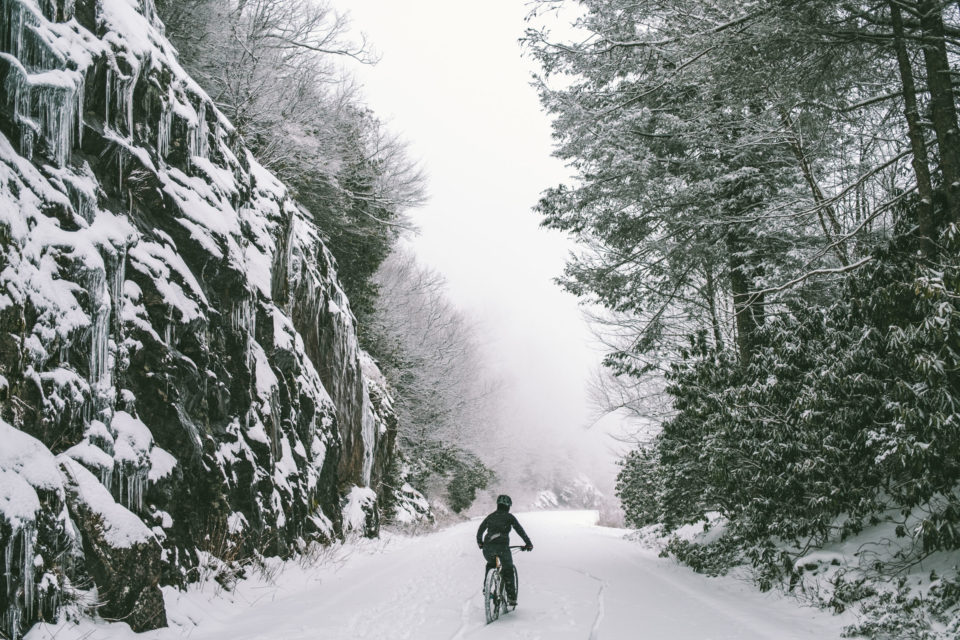45NRTH Naughtvind Review + Snow Biking the Blue Ridge Pkwy
In effort to keep pedaling through the cold of winter, Virginia tests the high-end 45NRTH Naughtvind Jacket, a performance piece designed for serious winter cycling. After a couple months of use, here’s her review. Plus, find a gallery and short report from two days of snow biking on the Blue Ridge Parkway…
PUBLISHED Feb 2, 2021
I am ridiculously cold-natured. It’s some sort of cursed familial trait that leaves both my sisters and me shivering as soon as the mercury drops below 65°F. Unless I’m on a bike, I don’t wear shorts, not even in our hot and humid summers. In 60°F (15°C) degree weather, I’m perfectly content in a down jacket, and I generally find a 30°F degree (-1°C) sleeping bag tolerable in 50°F (10°C) temperatures. The situation has recently gotten a little more complicated, but aside from occasional inferno-like fits in the middle of the night, I’m still uncomfortably cold much of the time. With little prospect for escaping this “winter of discontent,” I’ve been determined to find a clothing solution that can make spending time outdoors more bearable, and perhaps even pleasant. In pursuit of this goal, after being impressed with their gloves, I decided to give 45NRTH a closer look.
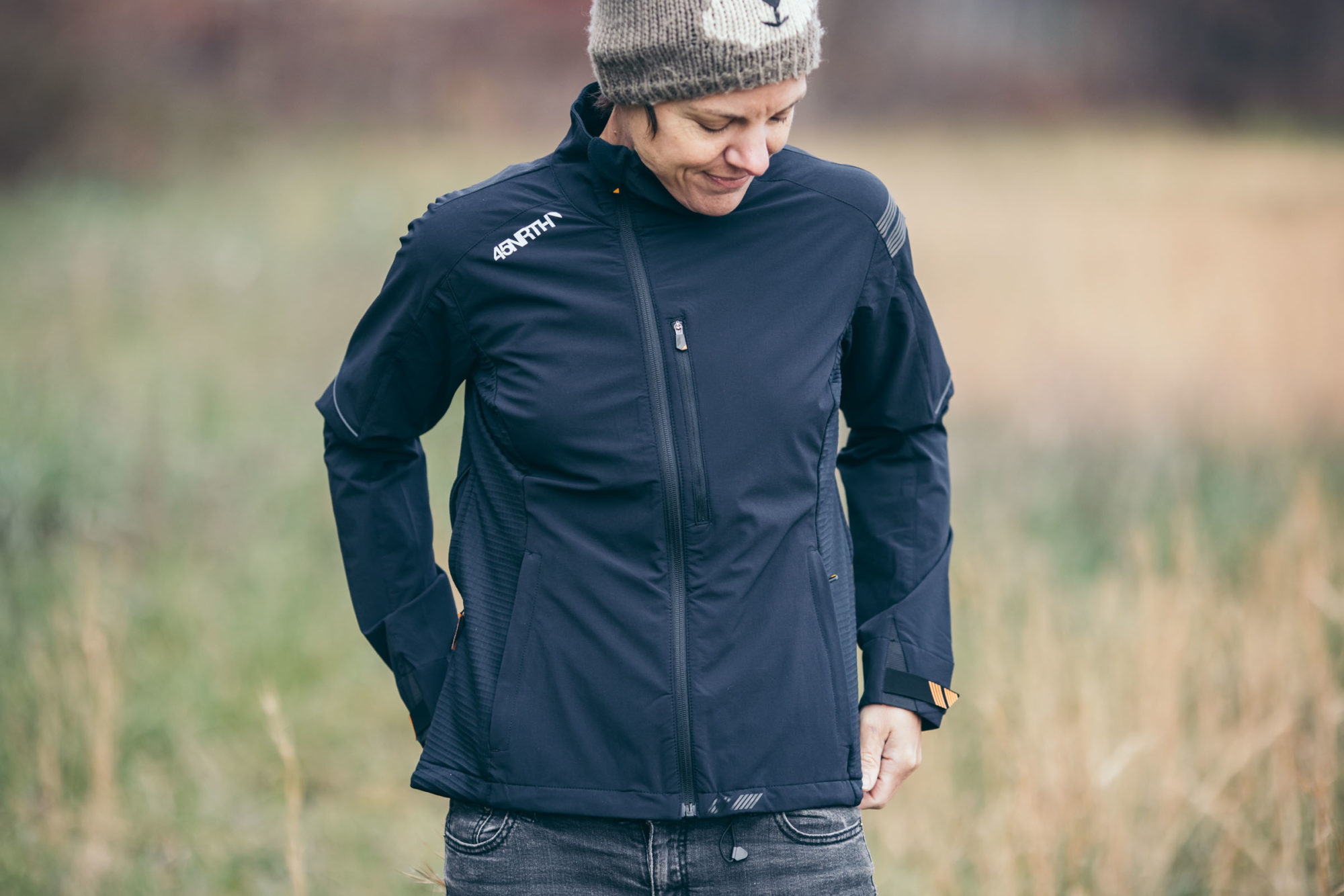
45NRTH is based in Bloomington, Minnesota, a location known for its brutal winters, so if anyone should understand what it takes to stay warm while riding in the cold, it’s the folks who work there. The Naughtvind Jacket is one component of 45NRTH’s three-part winter clothing cycling system and is the only article that is women-specific. The bibs and pants are “unisex.” Each individual piece in the system provides one layer of protection, so, depending on how extreme the cold is, riders can add or remove a layer from the arsenal. Other reviewers report wearing the entire system while riding in temperatures well below freezing. Since I won’t be braving the arctic any time soon, I opted to test out the Naughtvind Jacket as a stand-alone piece.
Upon first inspection, it’s clear that a lot went into the jacket’s design and fabrication. The Naughtvind’s overall construction is unique. Instead of utilizing a singular material, the jacket is a patchwork of fabrics. The predominant material is a stretchy, double-weave softshell. The polyurethane content of the outer surface increases the fabric’s durability as well as making it wind and water resistant, while the layer that lies closest to the skin is more breathable and soft. Different fabric is used to construct the side panel that extends from the armpit to the waist of the jacket. This waffle-knit, fleece-like fabric is stretchier than the main body fabric and is super soft to the touch. A third, fine mesh fabric was used for the jacket’s breast and side seam pockets as well as to line the jacket’s two zippered flank/back vents. Finishing textiles include a fleece lining inside the collar, an elasticized waistband, and two toggled elastic cords that extend along the waistband just a short distance on either side of the zipper. The cuffs are appointed with a small triangular patch of elastic for stretch and a hook and loop closure for tightening.
The Naughtvind is very well constructed. I’m not an expert seamster by any means, but I know enough to identify quality work when I see it. The stitches in this jacket are tight and consistent, and the serged edges are flawless. Working with a multitude of fabrics, especially knits of varying densities, in a single article of clothing is no small task. It is a time-intensive process that requires specialized equipment and skilled machine operators, all of which come at a significant cost. The Naughtvind’s designers obviously felt that the characteristics of each material it incorporates warranted the expense of both the fabrics themselves and of the jacket’s fabrication. The $295 price tag for the jacket is steep, but the quality of materials and workmanship are clear. However, when it comes to performance clothing, the real value of a piece is determined by how well it does its job.
I have been wearing the Naughtvind for the past two months in temperatures ranging from the low-50s (11°C) to the low 20s (-5°C). Around here, temperatures rarely drop below 20°F, and when they do, I’m not going for a ride. In the warmer range of temperatures (mid-40s to low 50s), I’ve found that a single short-sleeved baselayer or a thinner, long-sleeved shirt worn under the jacket provides more than adequate warmth. While I may initially be a little chilly, any exertion causes things to heat up quickly. At that point, the rather small, zippered flank vents don’t provide quite enough ventilation. More often than not, I need to unzip the entire jacket to cool down. In the mid-30s to low-40s, the side panel fabric is sufficiently breathable that I rarely need to use the vents. While I’m most comfortable riding in the Naughtvind at this temperature range, I have been impressed by the jacket’s performance in even colder temperatures. In the low-20s to mid-30s, I’ve added a couple of additional long-sleeved layers, one being a hoodie I can wear under my helmet, and I’ve stayed quite warm. On one particularly cold ride, I underestimated the jacket’s performance and wore my faithful puff jacket over it. In no time, I was shedding that layer and stashing it in my framebag. I haven’t put the Naughtvind through any rigorous rain testing yet, but thus far, it has kept me completely dry in light mists and snowfall.
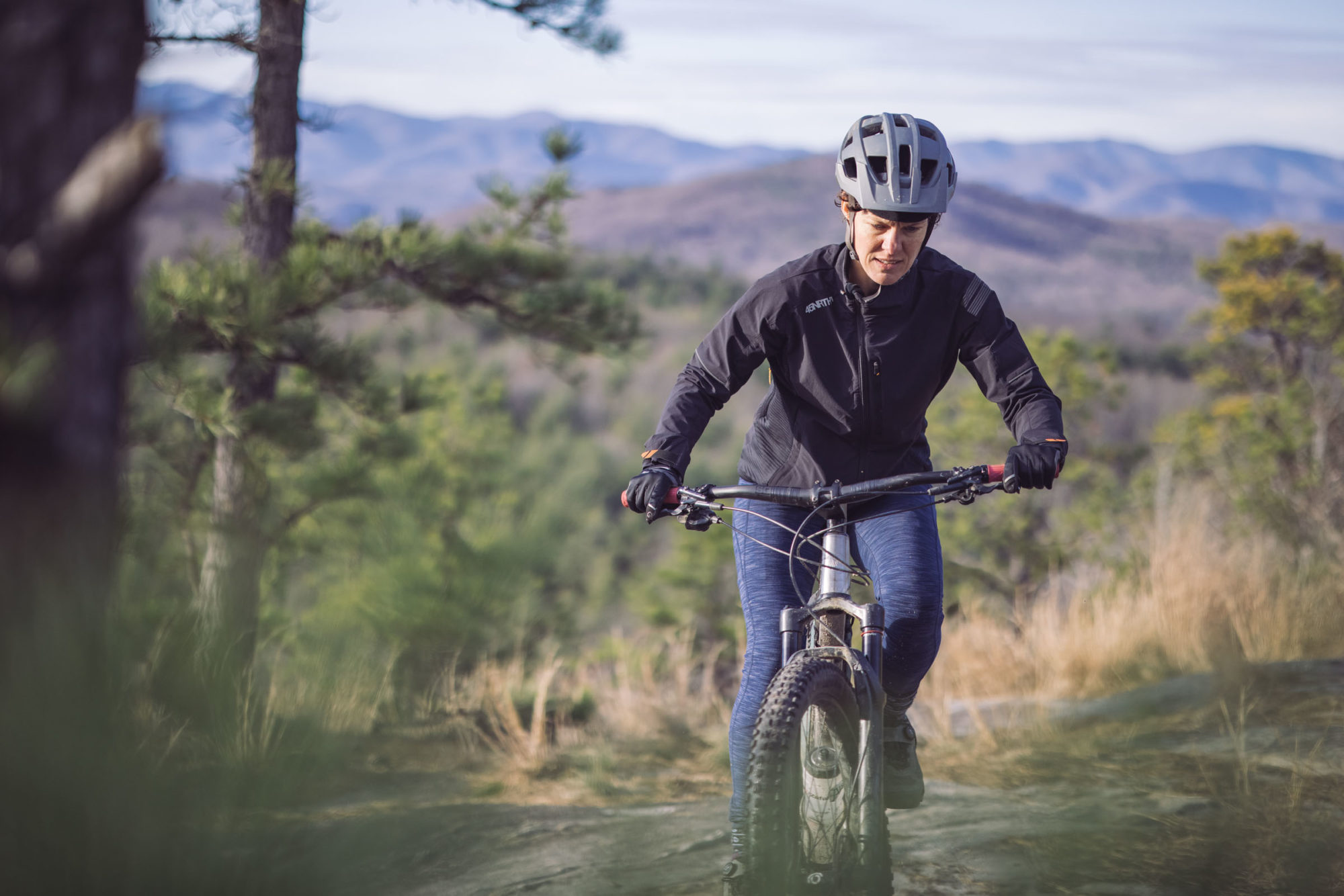
Performance apparel has to do more than regulate body temperature and manage moisture. It needs to move well and provide overall comfort. Too often, bike jerseys and other bike-specific apparel feel restrictive to me. That is not the case with this jacket. The stretchy side panel fabric supports a full range of motion through the torso, and the slightly elongated arms and dropped rear hem provide full coverage in a stretched out riding posture. Additionally, silicone tape embedded in the waistband helps to keep the hem in place. Some of the finer details in this jacket really amp up the comfort level. The asymmetrical zipper is probably my favorite detail, as I’ve suffered way too many times from zipper-induced chin-chafing. The two short toggled elastic cords in the waistband are also a nice touch, as they allow for minor adjustments to fit.
Overall, the Naughtvind is a fantastic jacket. That said, nothing’s perfect, and there are a few details I think could use improvement. Firstly, as great as I think the asymmetrical zipper is for eliminating chin rub, the collar design is also where I find some faults. When the collar is unzipped, it can be folded down, but, unfortunately, the excess material that makes the design possible won’t stay in place and just pops back up or otherwise flops around. Apparently, the original version of the Naughtvind had a snap for securing the collar, which I think would make a great addition to his jacket. I also find that, when fully zipped, the wide fit of the collar leaves my neck a little too exposed. While one could tuck their chin in the oversized collar to help keep it warm, I find that a neck gaiter does a much better job of keeping both the neck and chin protected from the elements.
I think the jacket could also be improved with larger “love handle” vents. As I wrote earlier, in warmer temperatures, they don’t provide enough ventilation, and I often have to unzip the jacket body. I realize most people won’t wear this jacket in warmer temperatures, so the vents are probably adequate, but incorporating larger vents would allow this jacket to cover more of the shoulder seasons. Since they are zippable, there is little risk that larger vents would compromise the warmth, so it seems like a no-lose proposition to me. The jersey-style pockets on the back of the jacket are the only other detail I find lacking. The pockets’ top edges have a lightly elasticized binding. In my opinion, the binding is not tight enough to keep items in the pockets secured. They’re fine for snacks, but I would hesitate to put anything valuable in them. Lucky for me, I always ride with a frame bag, so I don’t need to store essentials on my person, but for other day-riders, that could pose an issue. All that said, this is a common trait among jersey back pockets, so it’s more of a trust issue than a unique flaw.
Lastly, as great as the fit and performance of this jacket are, for typical bikepacking trips, it doesn’t match the overall comfort and versatility that a puffy and rain jacket layering system provides. The Naughtvind is fantastic for day rides, and is excellent for dedicated winter cycling, but it’s not the jacket I would pack for an extended tour when you have to make hard decisions and can only go with the most versatile and lightest weight option. That said, it’s not too heavy. At 442 grams, it rolls up surprisingly small. So for winter bikepacking, it’s definitely relevant.
- Model/Size Tested: Women’s Medium*
- Sizes Available: W’s XS, S, M, L, XL / M’s S, M, L, XL, XXL
- Actual Weight: 442 grams (15.6 ounces)
- Place of Manufacture: China
- Price: $295
- Manufacturer’s Details: 45NRTH.com
*I am 5’7″ tall, about 135 pounds and the size medium is true to fit. It’s form fitting, but not too tight and not too loose.
Pros
- Stretchy side panels provide great range of motion
- Cycling-specific cut provides goodt coverage
- Waffle knit side panels manage moisture and increase ventilation
- Asymmetrical zipper = No chin chafe
- Toggled waist cords and hook and loop wrist closures allow for fine-tuned fit
- Convenient rear jersey pockets for on-the-go snacking
- Reflective accents provide good visibility
Cons
- Expensive
- Back vents could be elongated for greater ventilation in warmer temperatures
- Collar can be unwieldy when not fully zipped
- Collar leaves neck a little too exposed in super cold temperatures
- Jersey pockets aren’t secure enough for storing valuables
Wrap Up
45NRTH’s Naughtvind may not be the do-it-all jacket that we all wish we had, but it is a super solid performer, built specifically for those who spend a lot of time cycling in cold weather. It does an impressive job of balancing warmth and breathability and it moves really well. What’s more, its solid construction means that it should last for at least as many years as you’d want to wear it. While the price tag may be too much for many of us to swallow, if you spend a lot of time on your bike in the cold and want a good looking jacket that will keep you toasty without added bulk, the Naughtvind is a great option. And, while I won’t be trading in my puffy for overnight and extended bikepacking trips, I intend to let the Naughtvind see me through the cold while I wistfully await the warmth of spring.
Snow Biking on the Blue Ridge Parkway
by Logan Watts
A couple of weeks ago, we had a novel opportunity to get some solid snow riding in on the Blue Ridge Parkway near our home. To kick things off, we had a somewhat significant winter storm blow through the area overnight. Well, significant for the south. There were also some unique conditions that made it all possible. We only got a couple of inches of snow where we live in the valley while the higher elevations up on the Parkway got 6 or 7″. In addition, temps remained well below freezing up there while they stayed just above freezing the next afternoon further down. That made it possible to get our old mid-90s 2wd Ford Ranger up to there and ride… two days in a row!
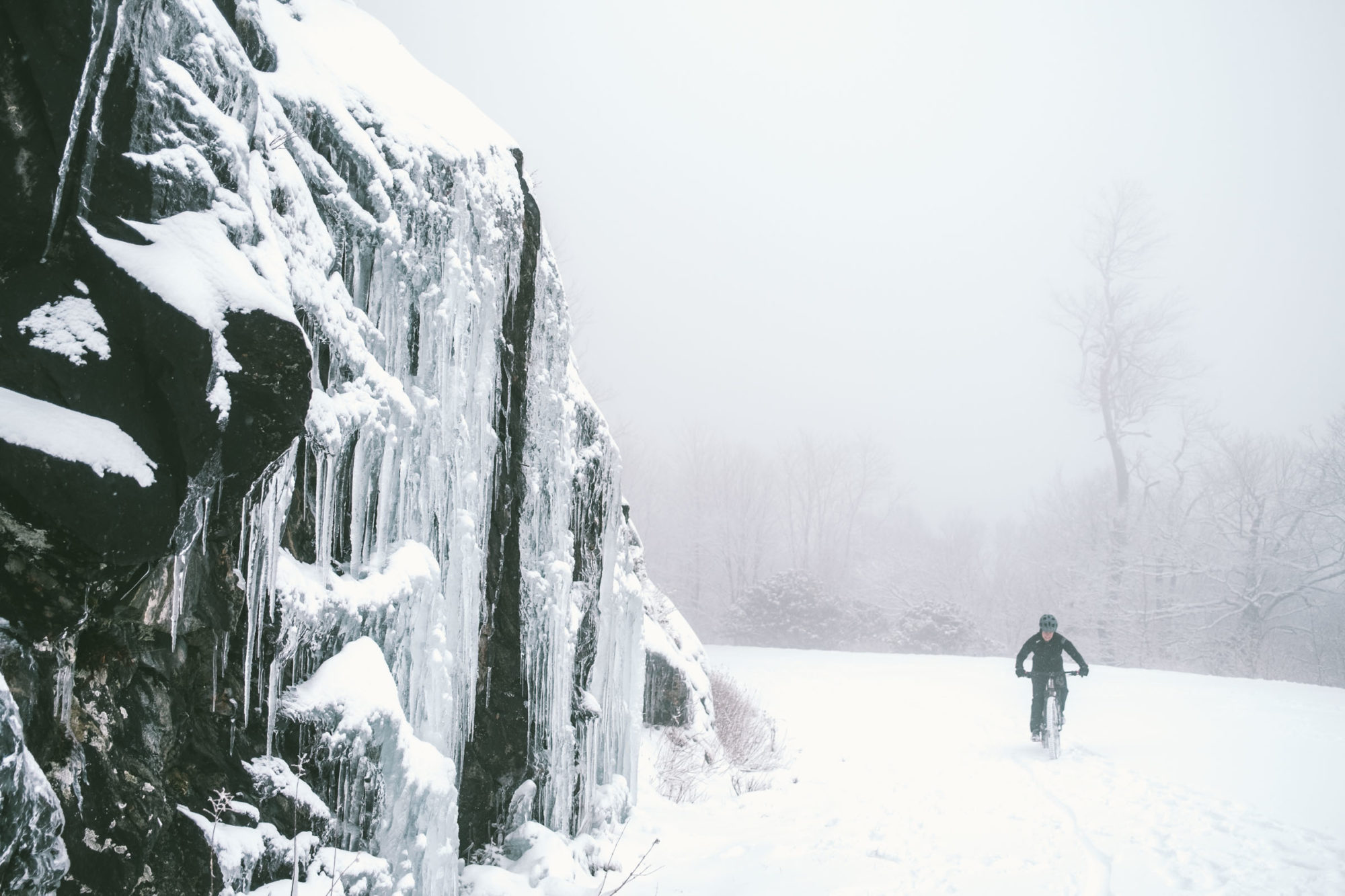
The Blue Ridge Parkway a linear National Park that runs some 470 miles through the most beautiful landscapes in Virginia and North Carolina’s Appalachian Mountains. While the Parkway is typically choked with loud motorcycles and tourist-filled cars during the high season (which seems to be never-ending during the pandemic), there are significant sections of it that are gated and closed to motor vehicles during winter (usually from mid-November to February). That’s the prime time get out there on foot or on a bicycle.
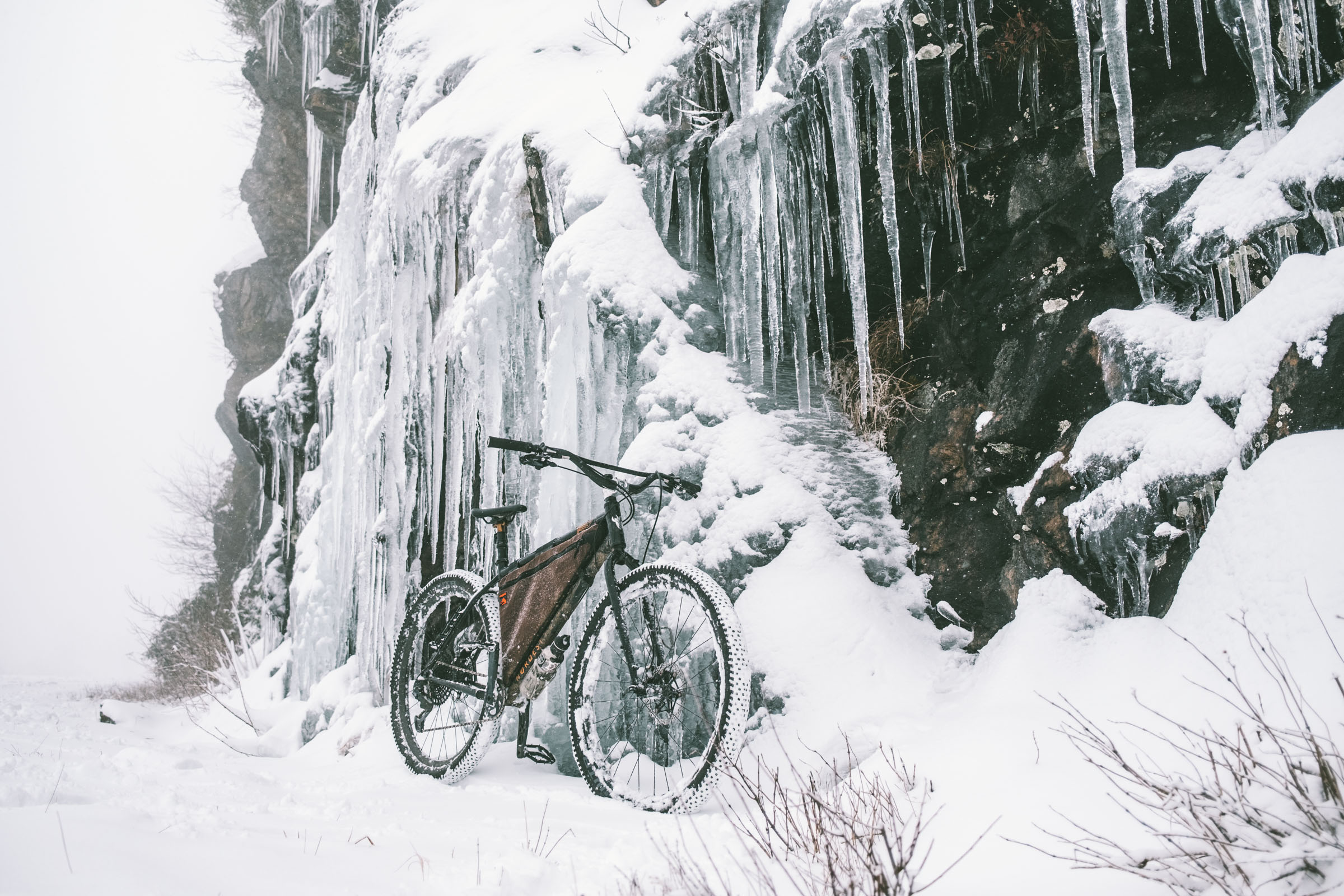
On day one, we made it up to the parking area a little after 2:30 p.m. and pedaled for a couple of hours. We were both riding 29 x 2.6″ tires—Gin on her Why Cycles Wayward, and me on the Nordest Sardinha that I’m currently testing. We didn’t make it very far, but we got well beyond any sign of footprints and were able to make some fresh tracks. It was a whiteout, but absolutely stunning. The cliffs were adorned with massive icicles and everything was covered in a semi-heavy powder, which made for great riding conditions. It was pretty cold—probably around 25°F. Virginia started off bundled in a couple of layers under the Naughtvind and a Patagonia puffy over top. She shed the puffy pretty quickly after realizing it was a bit much.
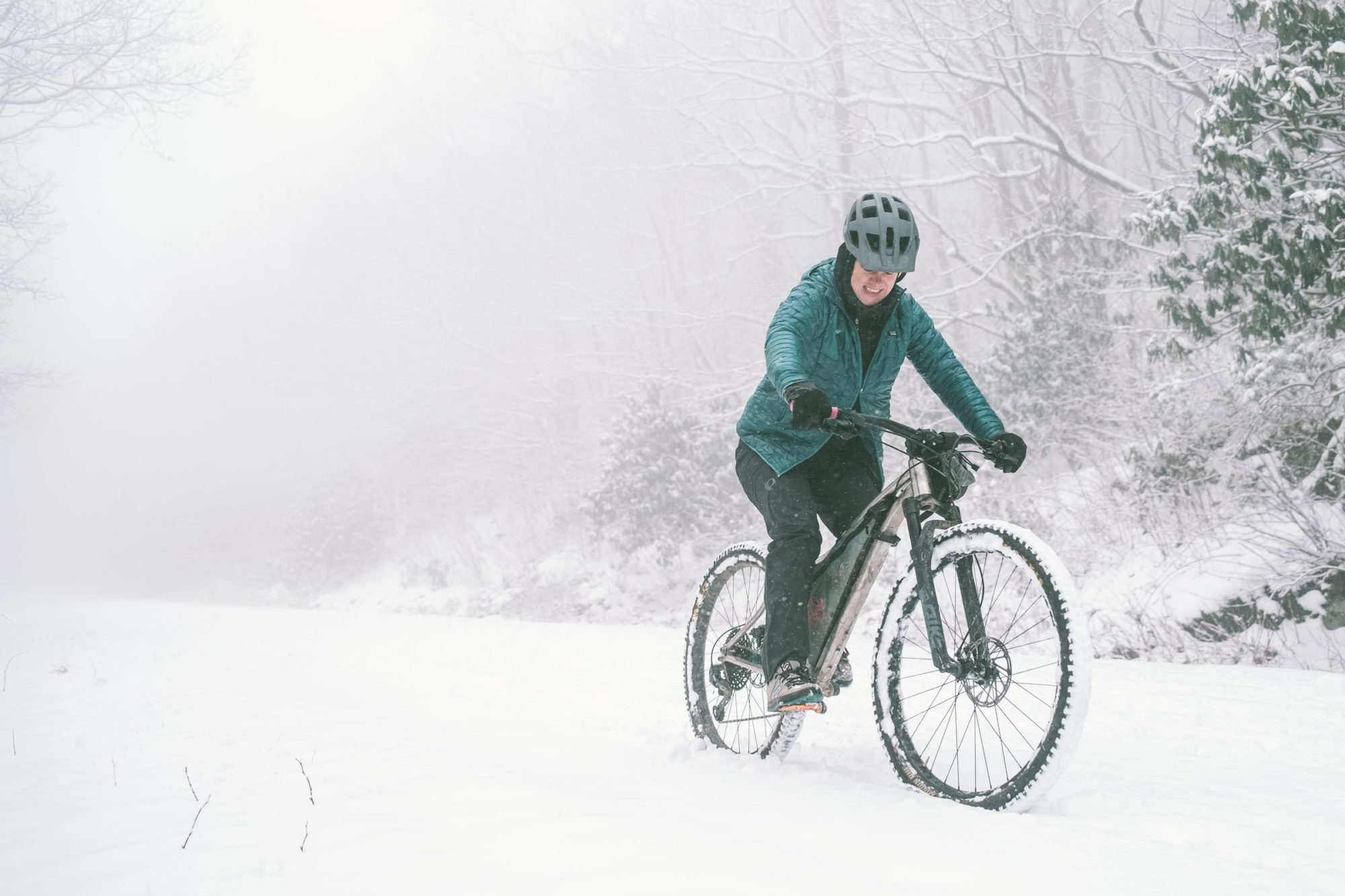
The snow picked up a couple of miles in we started to get nervous about our truck’s ability to make it safely down the mountain. Fortunately, it wasn’t too treacherous, so the next day we went for it again. This time we met our friend Ryan at the top and did about 13 miles. It was a chilly and beautiful ride. The wind and sun had made a few bare spots on the pavement, but most of it was a blanket of snow, complete with foot-deep drifts. Dare I say that as much as we dislike the cold, we’re already looking forward to the next one.
Please keep the conversation civil, constructive, and inclusive, or your comment will be removed.







